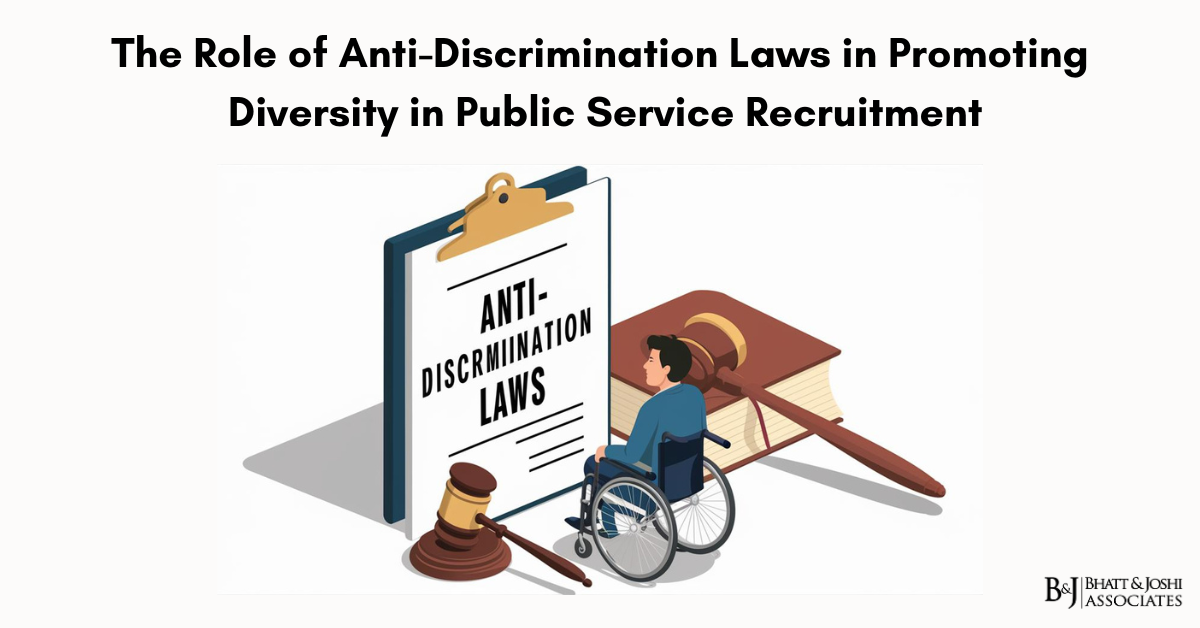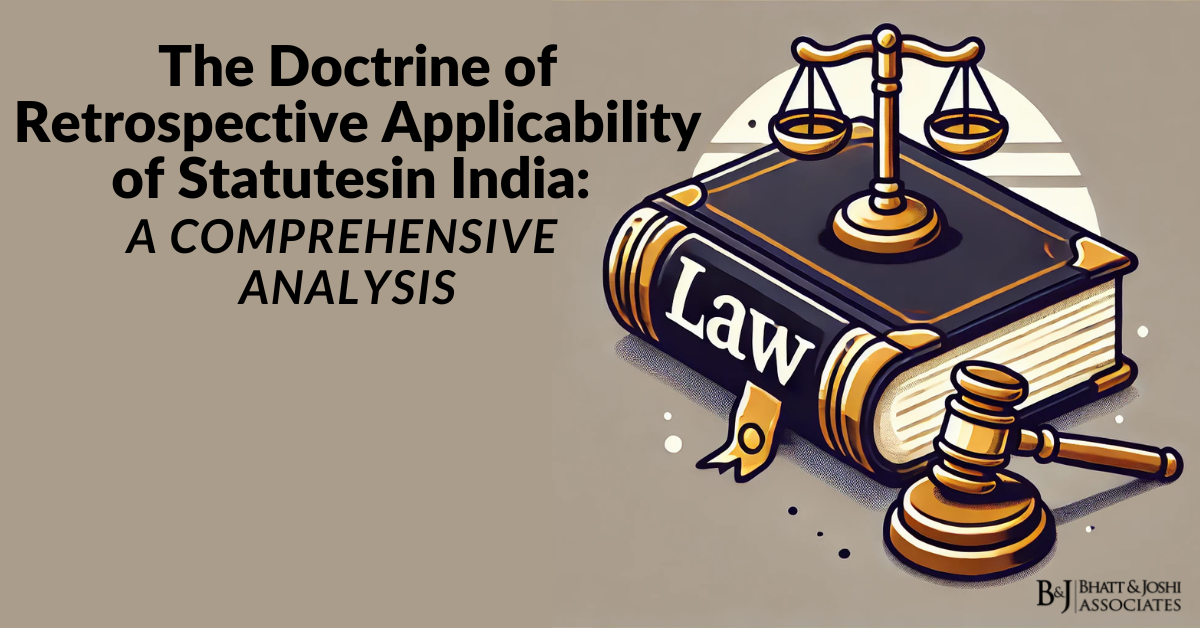Introduction
In India, a nation of 1.4 billion people, diversity manifests itself through a rich tapestry of gender, caste, region, religion, and ethnicity. The public service sector, as a microcosm of this diversity, plays a crucial role in representing and serving this varied populace. Anti-discrimination laws have emerged as a powerful tool in ensuring that the composition of public service reflects the diversity of the citizens it serves.
Overview Of Anti-Discrimination Laws In Public Service Recruitment
The foundation of anti-discrimination in public service recruitment in India is laid by Articles 14, 15, 16, and 39 of the Constitution. These articles collectively establish the principles of equality, prohibit discrimination, and mandate equal opportunity in public employment. Article 16(1) specifically prohibits discrimination based on religion, race, caste, sex, descent, place of birth, residence, or any combination thereof in matters of public employment. To give effect to these constitutional provisions, several laws and policies have been enacted over the years. The Persons with Disabilities (Equal Opportunities, Protection of Rights and Full Participation) Act, 1995 mandates a 3% reservation in public sector jobs for persons with disabilities. This act recognizes the unique challenges faced by individuals with disabilities and aims to ensure their representation in the public sector workforce. More recent legislation, such as the Transgender Persons (Protection of Rights) Act, 2019, has further expanded the scope of anti-discrimination laws. This act explicitly prohibits discrimination against transgender persons in public employment, marking a significant step towards inclusivity in the public service. Additionally, various government orders and policies have been implemented to provide reservations for Other Backward Classes (OBCs) and Economically Weaker Sections (EWS) in public service recruitment, further broadening the diversity landscape in public employment.
Implementation Of Anti-Discrimination Laws In Recruitment Processes
The implementation of anti-discrimination laws has led to several significant changes in public service recruitment processes. One of the most notable is the reservation of posts for candidates from Scheduled Castes (SC), Scheduled Tribes (ST), Other Backward Classes (OBC), Economically Weaker Sections (EWS), and Persons with Disabilities (PWD) categories. This system ensures that a certain percentage of positions are set aside for these underrepresented groups, providing them with increased opportunities for public service employment. Another key implementation measure is the provision of age relaxations for candidates from certain categories. This acknowledges that candidates from disadvantaged backgrounds may require additional time to prepare for competitive exams due to various socio-economic factors. Similarly, fee concessions, such as waived or reduced application fees for candidates from reserved categories, aim to remove financial barriers to participation in the recruitment process The implementation of these laws has also led to the practice of setting separate cut-off marks in competitive exams for reserved category candidates. This recognizes the historical and systemic disadvantages faced by certain groups and aims to level the playing field. Additionally, special recruitment drives are periodically conducted to fill backlog vacancies reserved for certain categories, ensuring that the intended benefits of these laws are realized in practice.
Impact Of Anti-Discrimination Laws On Diversity
The implementation of anti-discrimination laws has had a profound impact on the diversity of India’s public services. There has been a notable increase in the representation of SC, ST, OBC, and women in various branches of public service. This increased representation is not just a matter of numbers; it has far-reaching implications for the quality and nature of public service delivery in India. By providing access to prestigious and secure government jobs, these laws have played a crucial role in empowering marginalized communities. This empowerment extends beyond the individuals directly employed; it creates a ripple effect in their communities, inspiring others and challenging long-held stereotypes about who can occupy positions of power and influence in the public sector. Moreover, the increased diversity in public services has created important role models for younger generations from underrepresented communities. Seeing individuals from similar backgrounds in positions of authority can inspire youth to aspire to such roles, further perpetuating the cycle of increased representation. This diversity also translates into improved service delivery, as a more diverse public service is better equipped to understand and address the needs of India’s diverse population, leading to more inclusive and effective governance.
Challenges And Criticisms
Despite the positive impacts, the implementation of anti-discrimination laws in public service recruitment faces several significant challenges. One of the most persistent debates surrounds the balance between merit-based selection and the need for diversity. Critics argue that reservation policies may compromise the quality of public services by prioritizing demographic representation over individual qualifications. Proponents, however, contend that diversity itself is a form of merit, bringing varied perspectives and experiences that enhance the overall quality of public service. Another challenge is the ‘creamy layer’ issue, particularly relevant to OBC reservations. There are concerns that the benefits of reservation are not reaching the most disadvantaged within reserved categories, instead being disproportionately accessed by relatively well-off individuals within these groups. This has led to ongoing discussions about how to refine reservation policies to ensure they benefit those most in need. Implementation gaps present another significant challenge. Despite legal provisions, many posts reserved for certain categories remain unfilled due to various administrative and social factors. This could be due to a lack of qualified candidates, inadequate outreach, or bureaucratic inefficiencies in the recruitment process. Additionally, the current system struggles to address the complex intersections of various forms of disadvantage, such as women from scheduled castes or disabled individuals from economically weaker sections, highlighting the need for more nuanced policies.
Looking Forward
As India continues to evolve, so too must its approach to promoting diversity in public service recruitment. One potential area for development is expanding the scope of anti-discrimination laws to consider reservations or special provisions for other marginalized groups, such as religious minorities or LGBTQ+ individuals. This would reflect a more comprehensive understanding of diversity and inclusion in the context of India’s changing social landscape. There is also a growing recognition of the need to focus on skill development alongside reservation policies. Implementing more robust pre-recruitment training programs for candidates from disadvantaged backgrounds could help address criticisms about merit while still promoting diversity. Such programs could provide targeted support to help candidates compete effectively in the recruitment process. Regular review and update of reservation policies is another crucial area for future development. As society changes, so too do the nature and extent of disadvantages faced by different groups. Periodic reviews can ensure that these policies remain relevant and effective, addressing current needs rather than historical inequalities that may have evolved or diminished over time.
Conclusion
Anti-discrimination laws have played a crucial role in promoting diversity in India’s public service recruitment. These laws have significantly altered the landscape of public employment, making it more representative of India’s diverse population. While challenges remain, including debates about merit, implementation gaps, and the need for more nuanced policies, the overall impact of these laws has been transformative. As India moves forward, continuous refinement and expansion of these laws, coupled with effective implementation, will be key to ensuring a truly diverse and inclusive public service. This ongoing process of evolution in anti-discrimination laws and policies reflects India’s commitment to the principles of equality and representation enshrined in its constitution. By striving for a public service that mirrors the diversity of its citizenry, India is working towards a more inclusive and equitable society,














